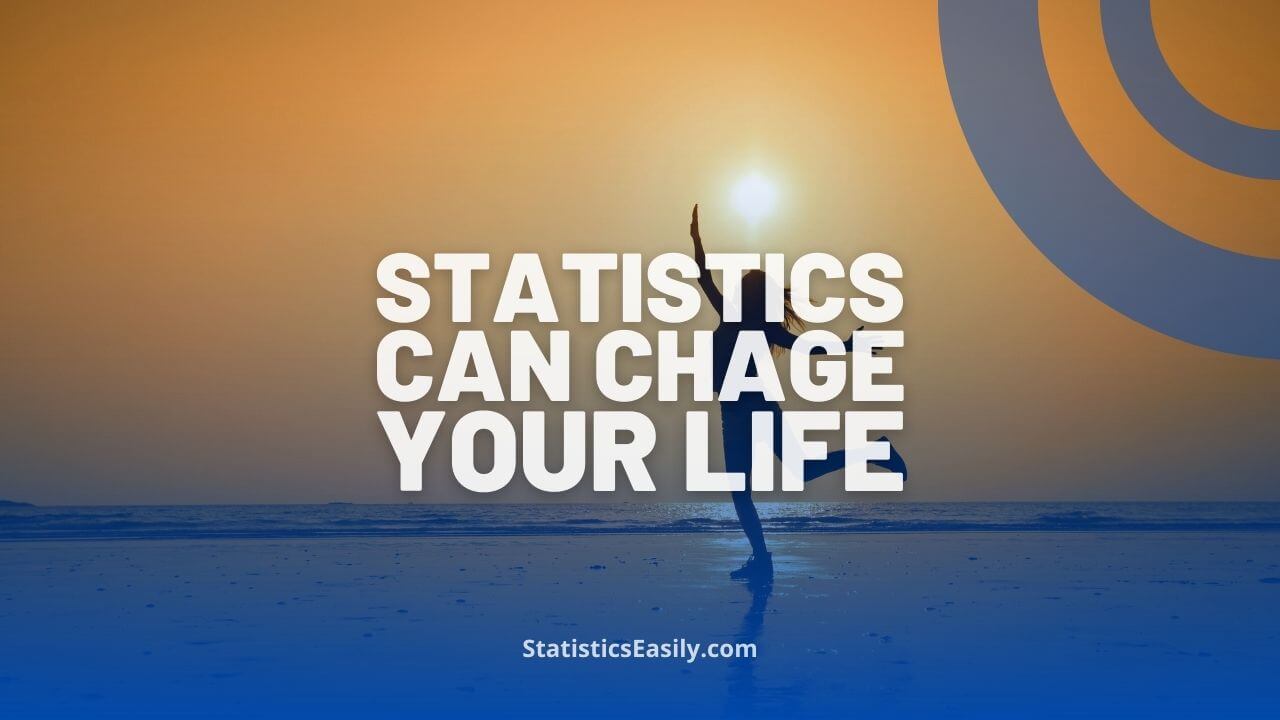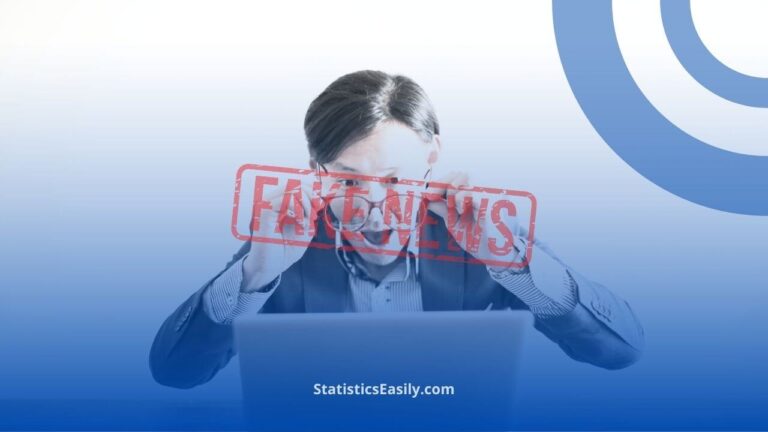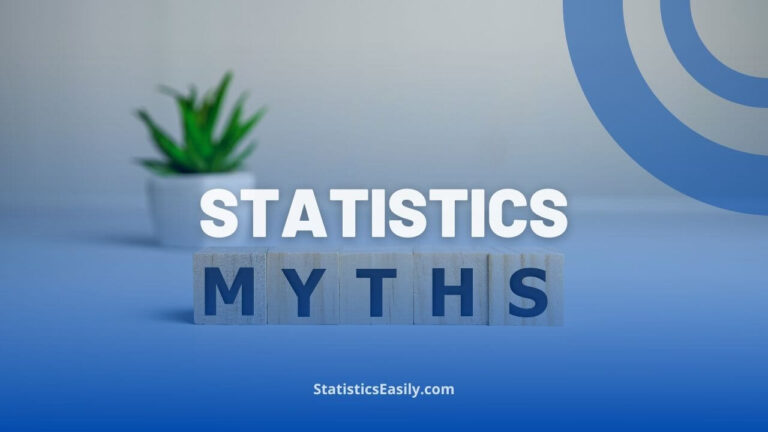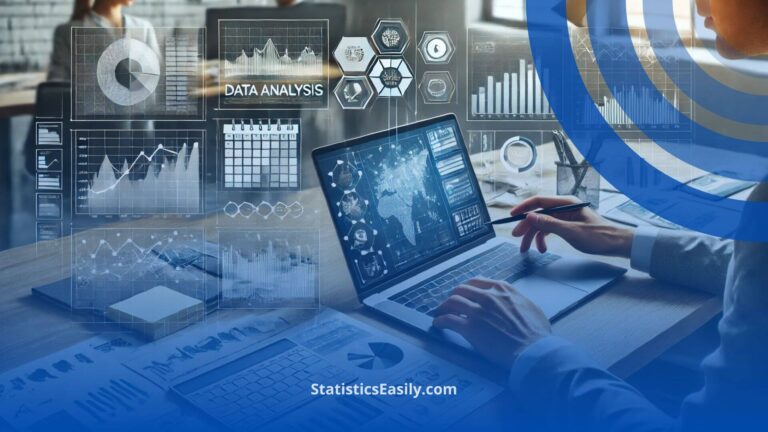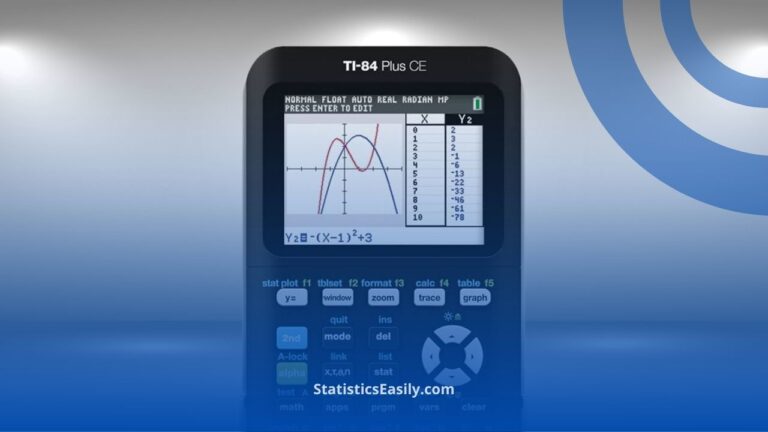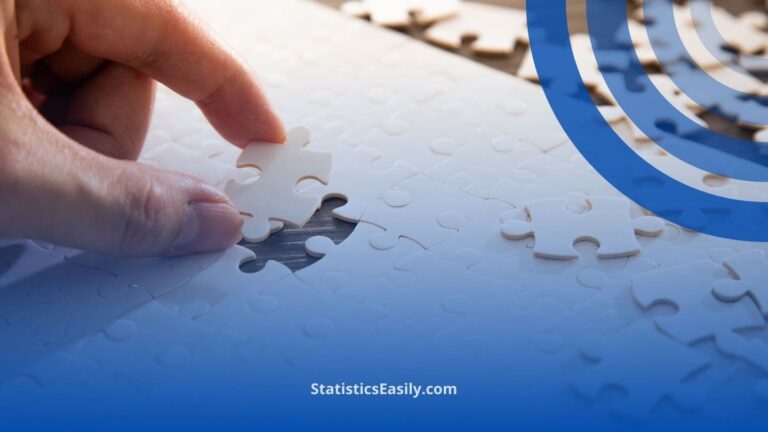How Statistics Can Change Your Life: A Guide for Beginners
In this article, we discuss the importance of statistics in everyday life, covering its types, ethics, and applications in various sectors. The aim is to empower individuals with the knowledge needed for informed decision-making. The piece also addresses common mistakes and critical software tools in statistics.
Introduction
The Power of Statistics in Everyday Life
In the Information Age, we’re inundated with data—scientific findings, economic indicators, healthcare metrics, and more. Statistics transform this data from mere numbers into a tool for interpreting our complex world. They enable us to identify patterns, forecast trends, and make informed decisions in various life aspects.
Why You Should Care
Statistics might seem dull or daunting, but they are crucial for modern literacy. They aren’t just for academics or specialized fields; they’re helpful in everyday life. Whether you’re considering home ownership, evaluating oil prices, or interpreting election polls, statistical understanding helps you make informed choices, while ignoring it can lead to poor decisions based on unreliable sources.
What You’ll Gain from This Guide
This guide offers more than basic number skills; it provides an essential understanding of statistical thinking. This understanding has real-world applications that can improve many areas of your life, from health and finance to civic engagement and ethical decision-making. Grasping statistics equips you with a valuable tool for better understanding and interacting with the world.
Highlights
- Statistics offer insights that help us navigate life’s complexities.
- Statistics inform choices in specialized fields and day-to-day activities.
- Ethics in statistics safeguard data integrity and promote transparency.
- Descriptive and Inferential types aid in comprehensive data interpretation.
- Proficiency in software like Excel, R, or Python enhances data analysis quality.
The Good, the True, and the Beautiful in Statistics
The Objective Nature of Statistical Analysis
In an era abundant with information yet often lacking in truth, statistics provide a rigorous, objective pathway. They enable us to sift through data and draw unbiased conclusions. Statistics serve in science, policy-making, and ethical decisions, allowing us to see phenomena for their true complexity rather than through a subjective view.
The Aesthetic Beauty of Well-Visualized Data
Statistics have the underappreciated merit of turning raw data into visually compelling stories. A well-designed graph can reveal complex patterns and trends, enhancing comprehension. This aesthetic quality is not just an art form but a crucial part of effective communication, facilitating better understanding and decision-making.
Ethical Considerations in Statistics
In striving for truth and goodness, ethics in statistics are essential; they have the capacity not just to reveal but also to mislead. Adherence to ethical guidelines ensures transparency in data methods, integrity in analysis, and caution in interpretation. These ethical principles serve as the moral compass for statistical practice, safeguarding its integrity and societal impact.
Fundamentals of Statistics
Types of Statistics: Descriptive and Inferential
Statistics serve as a pillar of rational thought, lending structure to diverse fields like science, public policy, and health. Within the realm of statistics, two primary types dominate the landscape: Descriptive and Inferential Statistics. Descriptive Statistics provides a detailed account of data points collected from an experiment or study. It gives us measures of central tendency, like the mean or median, and measures of dispersion, such as the range and standard deviation. While Descriptive Statistics act like a camera, capturing a snapshot of the data, Inferential Statistics is more like a detective, making educated guesses about a broader population based on the sample. Inferential statistics deploy a variety of tests to make predictions, model relationships, and identify patterns that go beyond the immediately observed data. By mastering both types, we embrace a balanced approach to understanding the world, applying the rigors of empirical analysis in the quest for what is true.
Data Types: Numerical, Categorical, and Ordinal
Equally pivotal in statistics is the ability to discern the nature of the data you’re scrutinizing. Data can generally be classified into three categories: Numerical, Categorical, and Ordinal. Numerical data are the raw numbers that offer quantifiable metrics and can be subjected to a full range of mathematical operations. These numbers represent temperatures, ages, or financial figures and are the backbone of many scientific inquiries. Categorical data, in contrast, are qualitative and describe characteristics that can be sorted into groups but not numerically quantified—think of colors, types of cuisine, or political affiliations. Finally, Ordinal data serve as a hybrid, involving elements that can be ranked in order but where the intervals between the values lack a consistent interpretation. Examples include educational levels or customer satisfaction surveys. Recognizing these data types enriches our analysis, offering a lens to interpret the world’s complexity nuancedly, bringing us closer to objective truths and informed decision-making.
Basic Terminology
Venturing further into the field of statistics necessitates a foundational grasp of its basic terminology. Mean, median, and mode are measures of central tendency, telling us where data points tend to cluster. Variance and standard deviation are measures of dispersion, indicating how spread out these data points are. The mean provides a mathematical average, the median offers a middle ground less influenced by outliers, and the mode highlights the most frequent value in a data set. Variance and standard deviation, meanwhile, quantify the volatility in the data, reflecting the consistency—or lack thereof—in a given sample or population. Understanding these terms equips us with the tools to make valid comparisons, perform reliable analyses, and generate actionable insights, fulfilling our quest for the good, the true, and the beautiful through empirical understanding.
How Statistics Influence Decision-Making
In Business
In the modern business landscape, data analytics guide decision-making. Market research informs product development and marketing, while statistical models predict product success and ROI. Metrics like customer retention and sales growth are now key performance indicators, shaping long-term strategies and evaluating management effectiveness.
In Healthcare
Statistics underpin healthcare from clinical trials to public health. Randomized controlled trials use statistical methods for reliable, generalizable results. Epidemiological studies, like those during the COVID-19 pandemic, use statistics to track disease spread and guide public health policies.
In Public Policy
Statistics play a critical role in policy-making. Governments use data to assess economic indicators like GDP growth and employment. Policy adjustments often rely on statistical evidence. Social welfare programs use data to allocate resources efficiently, and an understanding of statistics allows citizens to appreciate policy complexity better.
Statistical Thinking in Daily Life
Shopping and Consumer Choices
Have you ever wondered why some products are more popular than others or why certain brands have a devoted customer base? The answer often lies in statistics. Marketers use data analytics to gain insights into consumer preferences and behaviors. These insights are then used to tailor products and marketing campaigns to specific audiences. When you read product reviews and compare prices, you conduct a rudimentary statistical analysis. Concepts like mean, median, and mode come into play when understanding average ratings. At the same time, percentages and probabilities help you ascertain the likelihood of product satisfaction.
Understanding News and Media
In an age of information overload, the ability to critically analyze and interpret statistical data becomes a survival skill. Media outlets frequently use data points, surveys, and infographics to illustrate stories, and a basic understanding of statistics can help you discern fact from opinion or significance from sensationalism. Whether it’s election polling, climate change graphs, or economic reports, a statistically literate person is more adept at separating the wheat from the chaff and becoming a more responsible consumer of information.
Health and Lifestyle Decisions
How does one make informed choices regarding diet, exercise, or general well-being? The answer again is statistics. Various health studies, some observational and others experimental, give us a wide array of data on what foods are beneficial or harmful, what exercises are most effective for specific goals, and what lifestyle choices are associated with longevity and happiness. Understanding the statistical significance of a particular study or the confidence interval of its conclusions can guide your health choices meaningfully. Moreover, it can empower you to ask the right questions and seek additional information, aligning your preferences with evidence-based practices.
The Role of Probability
Foundations of Probability
The concept of probability is the bedrock upon which the edifice of statistics stands. Understanding probability is crucial for anyone involved in making decisions based on data. Probability theory originates in the study of gambling and insurance, two fields where outcomes are uncertain but can be estimated.
Statistical Inference
Probability theory is the basis for statistical inference, a branch of statistics focused on concluding data. Statistical inference involves using probability distributions, hypothesis testing, and confidence intervals, among other techniques, to make educated guesses about a population based on a sample. For example, election polls are a form of statistical inference where the preferences of a few thousand voters can predict the potential outcome for millions.
Predictive Analysis
Another offshoot of probability is predictive analysis, which aims to forecast future events based on historical data. From the weather forecast to stock market predictions, predictive analysis is a critical tool in various sectors. Advanced statistical methods, like time-series analysis and machine learning algorithms, are often employed in predictive modeling.
Risk Assessment
Probability is crucial in risk assessment, a practice integral to finance, insurance, and healthcare. Whether it’s the likelihood of an adverse drug reaction or the risk of a financial downturn, probability-based models help decision-makers prepare for different scenarios. In finance, this forms the core of portfolio management, where assets are chosen based on their expected return and associated risk.
Tools and Software for Statistical Analysis
Spreadsheets (Excel)
For those just beginning their journey into statistical analysis, Microsoft Excel provides an accessible and user-friendly platform. Many businesses already employ Excel, making it a valuable skill for any professional. The software includes essential statistical functions, offering a practical starting point for those new to the field.
Introductory Software (JAMOVI)
For those seeking a stepping stone between spreadsheets and more complex statistical software, JAMOVI offers a free and easy-to-use solution. Developed to simplify the user experience, JAMOVI provides a graphical interface that makes data analysis more accessible. Its functionalities extend beyond Excel and cover various statistical tests, making it an ideal choice for beginners who wish to deepen their understanding without the steep learning curve of R or Python.
Statistical Software (R, Python)
For more nuanced analyses, mastering a statistical programming language like R or Python is invaluable. These languages offer advanced functionalities and flexibility, enabling sophisticated analyses and compelling data visualizations.
Essential Skills to Develop
Data Collection and Cleaning
Data collection is the foundation upon which all statistical analyses are built. Whether you are conducting a survey, mining big data, or performing scientific experiments, accurate data collection is vital. However, raw data often contains errors, missing values, or outliers that can skew your results. This is where the skill of data cleaning comes in. Mastering techniques to clean and preprocess data is crucial for generating reliable insights. The cleaner and more accurate the data, the more truthful and insightful the conclusions will be. This practice aligns with striving for what is true by the highest ethical and scientific standards.
Data Visualization
Data visualization goes beyond the superficial presentation of information. It aims to simplify complex data sets, making them easier to interpret and analyze. A well-crafted chart or graph can provide a snapshot of trends, patterns, and outliers, serving as a guide for deeper investigation. Understanding color theory, layout, and design principles can make your visualizations not only informative but also aesthetically pleasing, aligning with the pursuit of what is beautiful. The ability to transform complex data into understandable visuals makes you an invaluable asset in any organization that relies on data-driven decision-making.
Hypothesis Testing
Hypothesis testing is the cornerstone of inferential statistics, allowing us to make educated guesses and informed decisions based on data. In a world increasingly driven by data, being able to formulate a clear hypothesis and test it rigorously is a skill of paramount importance. This systematic approach avoids the pitfalls of speculation and assumption, focusing instead on what can be proven through careful analysis. Whether in scientific research, business strategies, or academic studies, hypothesis testing provides a structured way to draw valid conclusions from data. It aligns the practice of statistics with pursuing what is true and good, cutting through the noise to discover the facts that matter.
Common Pitfalls and How to Avoid Them
Confirmation Bias
Confirmation bias is one of the most pervasive and insidious forms of cognitive bias that can skew statistical analysis and interpretation. It’s the tendency to seek out and interpret data in a way that confirms one’s pre-existing beliefs or hypotheses, overlooking data that may contradict them. Such bias not only distorts the truth but can also lead to ethically questionable decisions. To counteract this, one should engage in practices like blind data collection and peer reviews, making the methodology more rigorous and transparent. By doing so, we align ourselves with the pursuit of what is true, ensuring that our analyses are fair and unbiased.
Misuse of P-Values
The p-value is a tool in statistical hypothesis testing that tells you the probability of your data occurring under a null hypothesis. However, it’s frequently misunderstood or misused, sometimes leading to incorrect conclusions. For example, a p-value less than 0.05 is often (mistakenly) considered the hallmark of a successful experiment. However, a low p-value alone doesn’t guarantee that the finding is practically significant or that the null hypothesis is false; it simply means that the observed data is unlikely under the null hypothesis. Misinterpreting p-values can lead to “p-hacking” or “data dredging,” where one manipulates the data to achieve a statistically significant result, which can be misleading and ethically problematic. Proper understanding and applying p-values align with the principle of seeking what is true and good in scientific research.
Correlation Does Not Imply Causation
The statement “correlation does not imply causation” should be a mantra for anyone involved in statistical analysis. While a correlation between two variables suggests a relationship, it does not indicate that one variable causes the other to occur. Mistaking correlation for causation can lead to false conclusions and poor decisions in healthcare, finance, and public policy. One must employ additional statistical methods like experiments or longitudinal studies to determine causality. This vigilance in distinguishing between correlation and causation is aligned with the quest for what is true. It allows us to make decisions grounded in robust evidence.
Conclusion
Summary of Key Points
In this comprehensive guide, we have navigated the expansive landscape of statistics, delving into its core principles, applications, and ethical considerations. From the objective nature of statistical analysis to its ethical ramifications and fundamental theories to its real-world applications in business, healthcare, and public policy, we have shown how statistics is a robust tool for understanding the complexities of the world around us.
The Enduring Value of Statistical Knowledge
Statistics do more than quantify or tabulate; they provide a rigorous and unbiased lens for understanding the intricacies of the world. Whether in scientific research or policy formulation, statistical insights enable us to discern patterns, make educated guesses, and engage in informed decision-making. Mastering statistics, therefore, equips us to be more responsible citizens and critical thinkers, aligning our pursuits with true ones.
Your Next Steps in the Journey
As you embark on your statistical journey, remember this is just the beginning. The field offers vast areas to explore and skills to hone, serving as a guide to understanding the world better. Your next steps should involve:
- Expanding your knowledge of statistical software.
- Critically engaging with data.
- Avoiding common pitfalls like confirmation bias.
In a world increasingly shaped by data, being statistically literate is essential for making informed decisions in healthcare, news interpretation, and public policy. This guide aims to be your entry point into the world of statistics, equipping you to use data as a defensive and offensive tool in your pursuit of truth.
Recommended Articles
Dive Deeper into the World of Statistics with Us! The journey through the realms of statistics continues. There’s a trove of knowledge awaiting you in our blog. Whether you are a beginner eager to learn more or an enthusiast looking to refine your understanding, our collection of meticulously crafted articles is here to guide you.
- Join the Data Revolution: A Layman’s Guide to Statistical Learning
- 7 Myths About Statistics You Need to Stop Believing
- Top 5 Free Tools for Data Analysis in 2024
- Music, Tea, and P-Values: A Tale of Impossible Results and P-Hacking
- A Comprehensive Guide to Levels of Measurement in Data Analysis
Frequently Asked Questions (FAQs)
Q1: What is the significance of statistics in everyday life? Statistics play a crucial role in modern society by enabling individuals to interpret complex data, identify patterns, forecast trends, and make informed decisions in various aspects of life, from healthcare to financial planning.
Q2: Why should I learn about statistics? Understanding statistics is vital for navigating the Information Age, where data-driven decisions are commonplace. It helps avoid poor judgment based on unreliable sources and equips you with the skills to evaluate information critically.
Q3: What ethical considerations are there in statistics? Ethics in statistics involve ensuring data integrity and promoting transparency. It includes accurate data collection, avoiding bias, and presenting findings responsibly to maintain the truthfulness of statistical analysis.
Q4: What are the types of statistics? There are two main types: Descriptive statistics summarize data. In contrast, inferential statistics conclude from data, often using techniques like hypothesis testing and confidence intervals.
Q5: How can statistical thinking improve my daily life? Statistical thinking enhances everyday life by improving decision-making in shopping, understanding media reports, and making health and lifestyle choices, leading to more responsible and informed actions.
Q6: What is statistical inference, and why is it important? Statistical inference involves concluding a population based on a sample using probability theory. It’s essential for making educated guesses in various sectors, such as predicting election outcomes.
Q7: Can you explain predictive analysis? Predictive analysis uses historical data to forecast future events, employing advanced methods like time-series analysis and machine learning to predict outcomes in areas such as finance and meteorology.
Q8: What role does probability play in statistics? Probability is the foundation of many statistical methods, crucial for risk assessment and predictive modeling. It helps in assessing the likelihood of events and planning accordingly in sectors like finance and healthcare.
Q9: What are some standard tools for statistical analysis? Common tools include spreadsheets like Excel for beginners, JAMOVI as an intermediate


